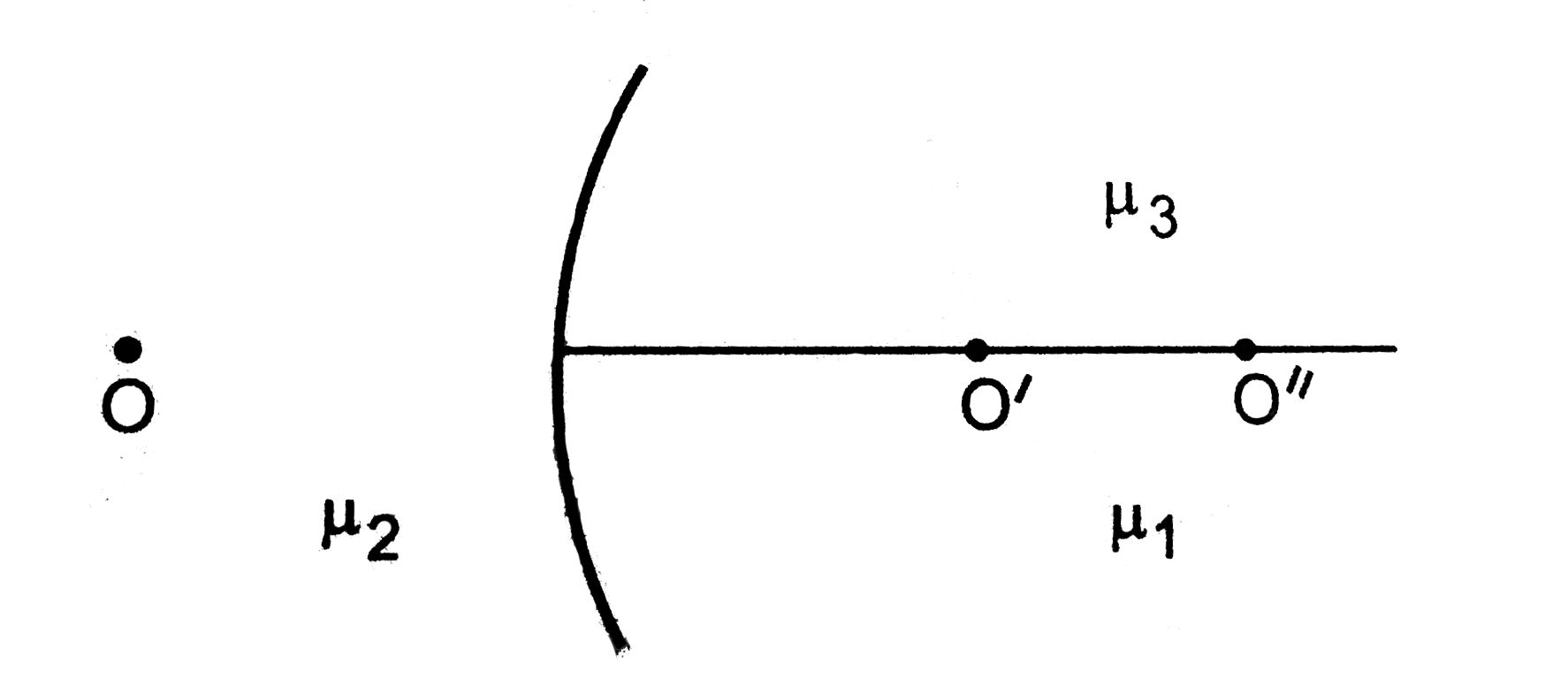Derive the equation relating u,v and R in case of refraction i a medum of refactive index μ1 from a medium of refractive index μ2 .State te assumption made in you deriation.Solution in Punjabi
Step by step video & image solution for Derive the equation relating u,v and R in case of refraction i a medum of refactive index mu_1 from a medium of refractive index mu_2 .State te assumption made in you deriation. by Physics experts to help you in doubts & scoring excellent marks in Class 12 exams.
Updated on:21/07/2023Topper's Solved these Questions
- REFRACTION OF LIGHTBOOK - MODERN PUBLICATIONCHAPTER - REFRACTION OF LIGHTEXERCISE - EXERCISE
168 Videos
- REFLECTION OF LIGHTBOOK - MODERN PUBLICATIONCHAPTER - REFLECTION OF LIGHTEXERCISE - EXERCISE
57 Videos
- SEMICONDUCTOR DEVICESBOOK - MODERN PUBLICATIONCHAPTER - SEMICONDUCTOR DEVICESEXERCISE - EXERCISE
174 Videos
Similar Questions
Explain the phenomenon of refraction at a plane surface separating two transparent media and show that μ=c/v where letters have their usual meanings.
View SolutionState the characteristis of image formed by a plane mirror.
View SolutionExplain the two processes involved in the formation of a p-n junciton diode. Hence defien the term"barrier potential".
View SolutionThe equation of refraction at a spherical surface is μ2v−μ1u=μ2−μ1R
Taking R=∞, show that this equation leads to the equation
RealdepthApparentdepth=μ2μ1 for fraction at a plane surface.
View SolutionFigure shows figure three transparent medi of refractive indices μ1,μ2andμ3. A point object O is placed in the medium μ2. If the entire medium on the right of the spherical surface has refractive index μ1, the image forms at O. If this entire medium has refractive index μ2 the image form at O''. In the situation shown

View SolutionWhat happens to the frequency, wavelength and speed of light that crosses from a medium with index of refraction mu_1 to one with index of refraction mu_2 ?
View SolutionProve that −μ1u+μ2v=μ2−μ1R when refraction occurs from rarer to denser medium at a concave spherical refracting surface.
View SolutionAn e.m. wave is travelling through a medium of refractive index mu_1 , and is incident on the boundary of a medium of refractive index mu_2 . IF the wave reflects at the boundary
View SolutionA double convex lens, made from a material of refractive index mu_1 , is immersed in a liquid of refractive index mu_2 , where mu_2 gt mu_1 . What change, if any, would occur in the nature of the lens?
View SolutionFigure shows three transparent media of refractive indices μ1,μ2andμ3. A point object O is placed in the medium μ2. If the entire medium on the right of the spherical surface has refractive index μ1, the image forms at O'. If this entire medium has refractive index μ3 the image form at O''. In the situation shown

View SolutionA convex lens made of a material of refractive index μ1 , is kept in a medium of refractive index μ2, Parallel rays of light are incident on the lens. Complete the pathof rays of light emerging from the convex lens if μ1=μ2.
View SolutionA convex lens made of a material of refractive index 'mu_1' is kept in a medium of refractive index μ2, Parallel rays of light are incident on the lens. Complete the pathof rays of light emerging fromthe convex lens if μ1<μ2.
View SolutionA convex lens made of a material of refractive index μ1 is kept ih a medium of refractive index μ2, Parallel rays of light are incident on the lens. Complete the path of rays of light emerging fromthe convex lens if μ1>μ2.
View SolutionDerive the relation:- frac(mu_2)(v) - frac(mu_1)(u) = frac(mu_2 - mu_1) (R) when light undergoes refraction fromoptically rarer to optically denser medium at curved surface.
View SolutionWhat happens to the frequency, wavelength and speed of light that crosses from a medium with index of refraction mu_1 to one with index of refraction mu_2 ?
View SolutionA double convex lens made from a material of refractive index mu_1 is immersed in a liquid of refactive index mu_2 where mu_2 > mu_1 . What change, if any, would occur in the nature of the lens?
View Solution
